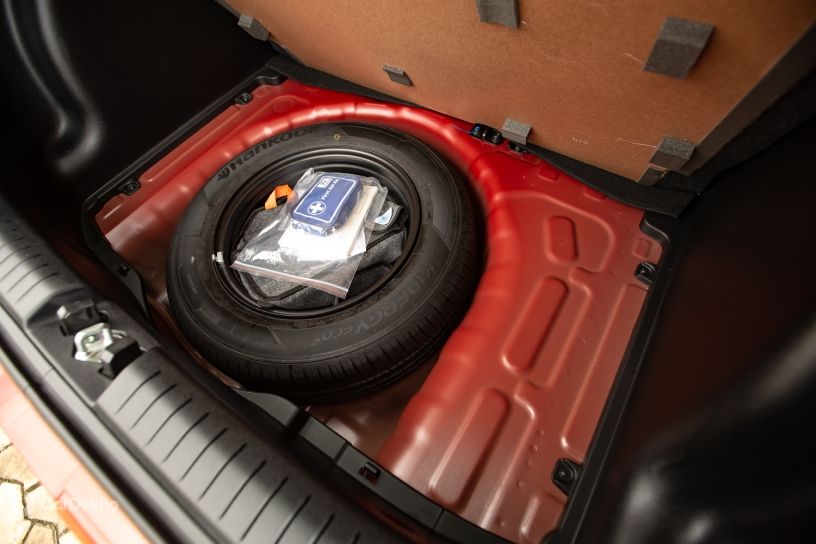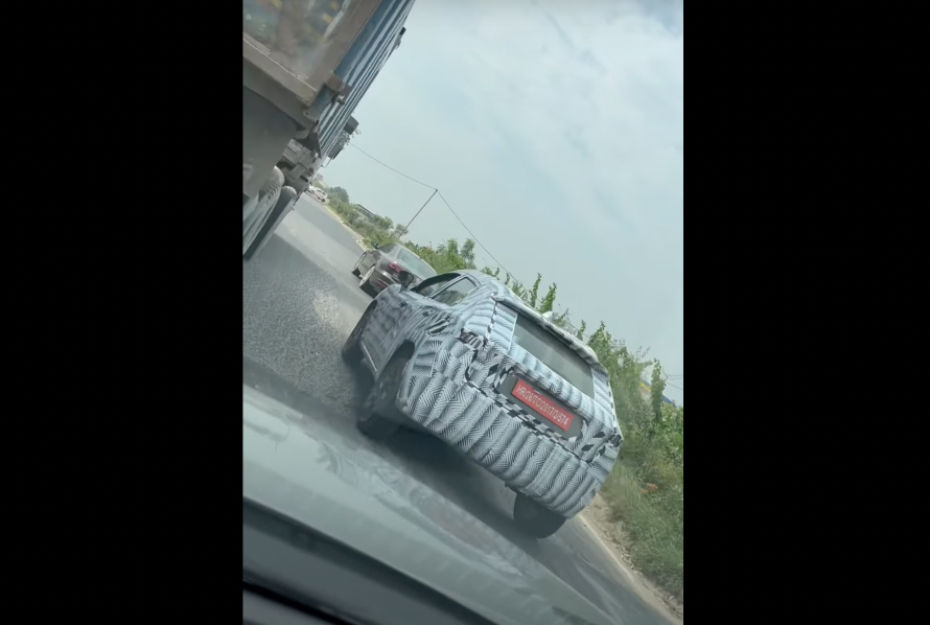Spare Wheel No Longer Required If Your Car Has A Tyre Pressure Monitor And Tyre Repair Kit
Modified On Jul 24, 2020 11:14 AM By Sonny
- Write a comment
This could free up some space under the boot for storage or batteries in the case of EVs

The Ministry of Road Transport and Highways has announced that it is no longer mandatory to carry spare tyres in cars if certain conditions are met. This amendment states two requirements: the car should be equipped with a tyre pressure monitoring system (TPMS) as well as a tyre repair kit.
What is a tyre pressure monitoring system?
Most premium models these days are equipped with TPMS, usually in the top-spec variants, but its range of functionality differs depending on the price. These systems use sensors that are usually mounted to the wheels before the tyres are mounted to them. The basic version would simply trigger a beeping sound and a warning in the instrument cluster if the sensor detects the tyre pressure is lower than a preset value in any of the four tyres. A more advanced TPMS on pricier models can offer a precise readout of the air pressure of each tyre on the multi-information display in the driver’s instrument cluster. It also warns of low tyre pressure, but you can also monitor the exact tyre pressure of all wheels so you don’t really need to wait for a warning.

Currently, high-specced variants of models like the Tata Nexon, Mahindra XUV300, Ford EcoSport and Hyundai Venue which are priced below Rs 12 lakh are equipped with TPMS. In the case of the new Honda City, it is offered as standard. As you go into higher segments with pricier models, they feature more advanced forms of TPMS.
What is a tyre repair kit?
If a tubeless tyre suffers from a puncture, a simple repair kit can be used to patch it up to stop/reduce the drop in tyre pressure. These kits use a sealant liquid that is pumped into the tyre through the valve with the help of a compressor that can be plugged into the 12V power socket. The sealant is meant to plug the puncture from the inside. It is important to note that these kits are only an emergency measure till you can have the puncture repaired from a specialist and might restrict you in terms of the safest top speed.
So, what’s changed?
Since it has been mandatory to carry a spare tyre, car manufacturers integrated room for a spare wheel into the vehicle design. It’s usually housed in the boot, under the storage area while some models would fit it to the underside of the car or on the bootlid (eg Ford EcoSport). Carmakers offered the spare tyre already mounted to a rim so that it could be easily swapped out when a tyre needs replacing mid-journey.
Now, for vehicles that are equipped with the TPMS feature and a tyre repair kit, they don’t necessarily have to have a spare wheel as well. Don’t worry, it is highly improbable that carmakers will stop selling mass-market models without a spare tyre altogether.
Is there any benefit from changing the rule?
Car technology has changed a lot over the years, all the way from electronic comforts and features right to their metallic skeletons. The amendment to the rule will mostly benefit two categories of cars: high-value mass-market products and those that run on alternative fuels, especially EVs.

Most electric cars house their battery packs under the floor and between the axles as this keeps the weight of the components in the centre which is better for driving dynamics. Without the need for a spare wheel well in/under the boot, the extra space could be designed to house more batteries which, in turn, would mean the EVs can offer more range from a full charge. For more performance, the extra space can be used to fit an electric motor to drive the rear wheels.
Even in the case of regular combustion engine cars, removing the spare wheel allows for more luggage space from the same design.















